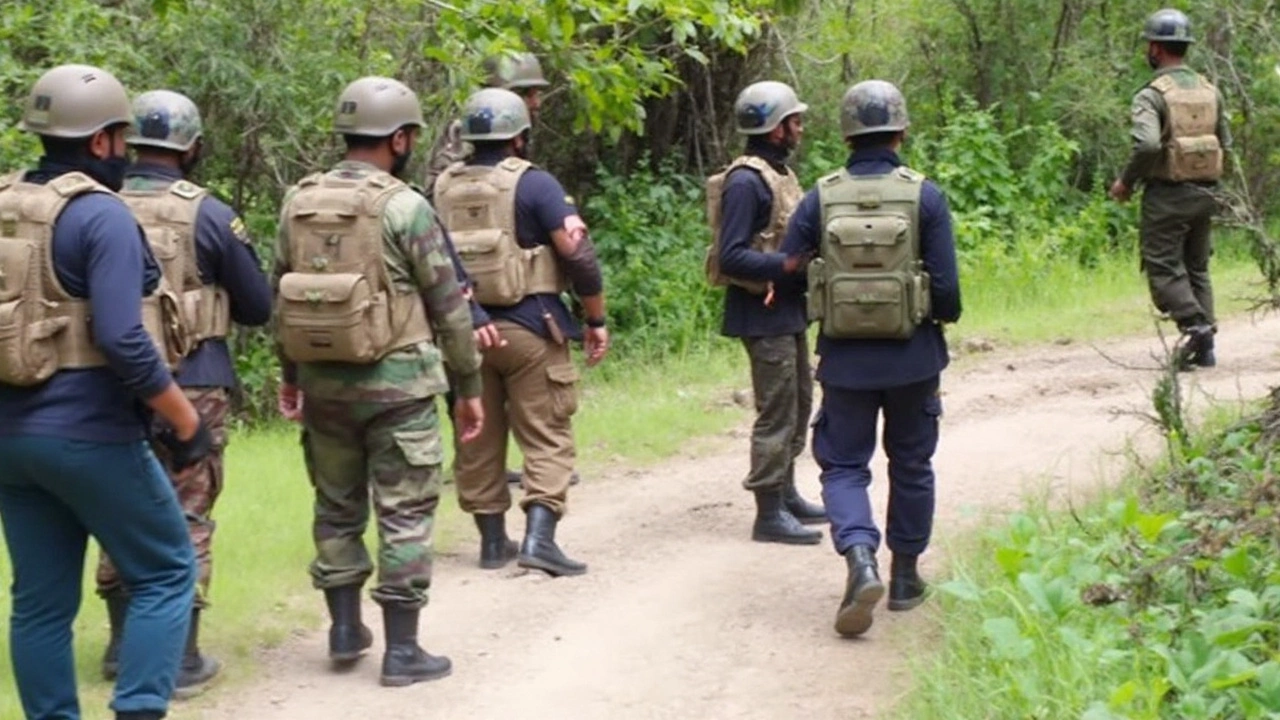Fifth Day of Nonstop Clashes in Kulgam’s Forests
Tucked inside the thick Akhal Khulsan forests of Kulgam, life has felt like a battlefield for days. The Kulgam encounter, stretching into its fifth day, is now one of the longest and tensest anti-terror crackdowns in recent memory in Jammu and Kashmir. It all kicked off on August 1, when tip-offs about a heavily armed group of militants hiding deep in the forest set off alarms among security agencies.
Responding quickly, a joint force made up of the Indian Army, CRPF, Jammu and Kashmir Police, and elite Special Forces moved in. For locals, the sound of choppers overhead and the sight of armored vehicles parked at the forest's edge have become a daily sight. This is not just a routine search — it’s a race against dangerous men who know the terrain better than anyone and have plenty of places to hide.

How the Militants Stayed a Step Ahead
The militants, estimated to be a large group at the beginning, scattered as soon as security moved in. With a forest area spanning three square kilometers, staying hidden became easier — but so did staging sudden attacks. Security forces say these groups broke up to make themselves harder targets and to increase their own chances of slipping away undetected. But it wasn't enough. By August 5, official sources confirmed two militants had been neutralized, and unconfirmed reports spoke of a possible third casualty among the attackers.
However, every win has come at a cost. Three security personnel have already been hurt during skirmishes, making officers even more cautious as they press ahead. The threat of booby traps and ambushes lingers each time they move deeper into the thicket.
These forests have turned into a real-life maze. To trace militants, security teams use thermal drones to map heat signatures and Rudra attack helicopters to scan likely hideouts and offer cover. It’s not just boots on the ground – technology is doing a lot of heavy lifting, too.
Senior figures, including Jammu and Kashmir’s new police chief Nalin Prabhat and 15 Corps commander Prashant Srivastava, have been personally monitoring the scene. Their presence on the ground is a clear signal: this operation is a top priority, especially after a recent string of militant strikes in southern Kashmir.
- The operation started from credible local intelligence regarding militant presence.
- Security forces are advancing carefully due to the potential for improvised explosive devices (IEDs) and close-quarter attacks.
- The area’s difficult terrain and thick foliage greatly slow down any sweeping operations.
This isn’t the only high-stakes firefight local residents have witnessed lately. Just last week, three Lashkar-e-Taiba militants, believed to be behind the April 22 attack in Pahalgam, were eliminated in another major clash. It’s a sign of continued militant activity despite repeated crackdowns.
Now, as the forest echoes with the hum of drones and the heavy steps of armed troops, Kulgam’s operation continues. The aim: restore calm and break the cycle that’s kept parts of Kashmir tense for so long.
